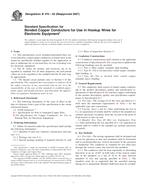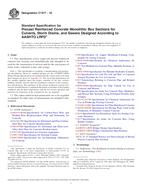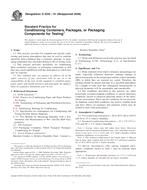1.1 This test method covers the determination of creep crack initiation (CCI) and creep crack growth (CCG) in metals at elevated temperatures using pre-cracked specimens subjected to static or quasi-static loading conditions. The solutions presented in this test method are validated for base material (i.e. homogenous properties) and mixed base/weld material with inhomogeneous microstructures and creep properties. The CCI time, t0.2, which is the time required to reach an initial crack extension of δai = 0.2 mm to occur from the onset of first applied force, and CCG rate, a˙ or da/dt are expressed in terms of the magnitude of creep crack growth correlated by fracture mechanics parameters, C* or K, with C* defined as the steady state determination of the crack tip stresses derived in principal from C*(t) and Ct (1-17).2 The crack growth derived in this manner is identified as a material property which can be used in modeling and life assessment methods (17-28).
1.1.1 The choice of the crack growth correlating parameter C*, C*(t), Ct, or K depends on the material creep properties, geometry and size of the specimen. Two types of material behavior are generally observed during creep crack growth tests; creep-ductile (1-17) and creep-brittle (29-44). In creep ductile materials, where creep strains dominate and creep crack growth is accompanied by substantial time-dependent creep strains at the crack tip, the crack growth rate is correlated by the steady state definitions of Ct or C*(t) , defined as C* (see 1.1.4). In creep-brittle materials, creep crack growth occurs at low creep ductility. Consequently, the time-dependent creep strains are comparable to or dominated by accompanying elastic strains local to the crack tip. Under such steady state creep-brittle conditions, Ct or K could be chosen as the correlating parameter (8-14).
Product Details
- Published:
- 06/01/2015
- Number of Pages:
- 27
- File Size:
- 1 file , 520 KB
- Redline File Size:
- 2 files , 1.2 MB


